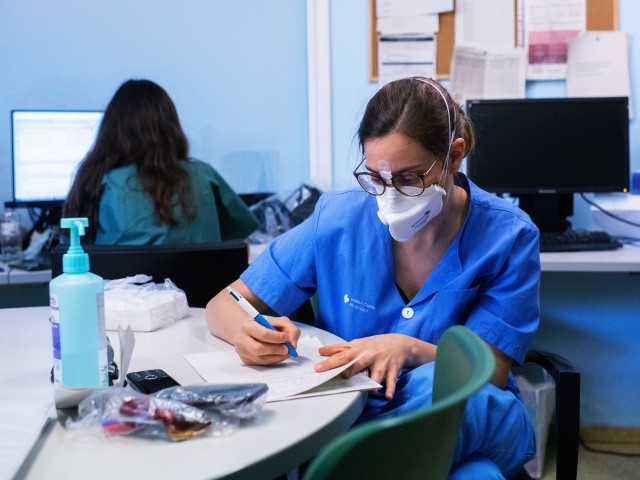Every year, more than 7,000 American citizens and green card-holders lose out on United States taxpayer-funded residencies to foreign nationals despite having earned their degrees as medical graduate physicians, bombshell congressional testimony reveals.
Kevin Lynn with Doctors Without Jobs unveiled the data to the House Judiciary Committee’s Subcommittee on Immigration and Citizenship on Tuesday, sounding the alarm on “graduate medical education profiteers.”
“Each year, over 7,000 U.S. citizens and lawful permanent resident medical graduate physicians — with include seniors and prior-year graduates — do not match for a medical residency, all of whom are qualified, ready, and willing doctors who have been sidelined and are waiting to serve their communities now,” Lynn said:
In 2021, over 4,000 non-citizen foreign-trained physicians received residencies in the U.S. This is an enormous increase when 10 years prior, 2,700 foreign-trained physicians received residencies. Between 2011 and 2021, more than 40,000 non-U.S. citizens, foreign-trained physicians were given U.S. taxpayer-funded residencies. Each residency costs taxpayers $150,000 a year. We are subsidizing foreign doctors. [Emphasis added]
As Rep. Tom McClintock (R-CA) noted in the hearing, more than 10,000 American doctors remain unmatched for residencies, while about 10,000 healthcare workers have been fired in recent months over Chinese coronavirus vaccine mandates.
“That’s 20,000 right there and yet we’re told the only answer is to import more foreign nationals,” McClintock said. --->READ MORE HEREAre There Too Many Foreign-Born Docs in the U.S.? Maybe, Maybe Not
Are there too many foreign-born physicians working in the U.S., or not enough? Members of one House subcommittee appear to be strongly divided on the issue.
"Today, approximately 200,000 foreign medical graduates work as physicians in the United States," Rep. Jerrold Nadler (D-N.Y.), chairman of the House Judiciary Committee, said Tuesday at a hearing on immigrant physicians held by the committee's Subcommittee on Immigration and Citizenship. "Immigrants account for more than 50% of physicians practicing geriatric medicine, approximately 40% of those practicing critical care and internal medicine, and nearly one-quarter of those practicing general medicine." ...
[...]
...Are U.S. Doctors Being Displaced?
Kevin Lynn, co-founder of Doctors Without Jobs, a group aimed at prioritizing U.S. citizens for medical residencies, said he was "gobsmacked" by the current situation. "Prior to 1980, there was a situation that existed where we weren't filling the residencies available," he said. "So you could see where at that point, there would be some mechanism to help fill that with foreign-trained physicians, and we did. However, that is not the case today." Instead, "there are thousands of doctors every year who are U.S. citizens, or are lawful permanent residents, that are not getting residency positions ... I don't see a need at this point to continue on with the number of foreign-trained physicians. We have the doctors right here in the U.S."
The remarks by Lynn, who is also executive director of Progressives for Immigration Reform, contrasted with statistics Skorton gave in his opening statement. "Last year 55% of non-U.S. graduates of international medical schools matched to a residency program," said Skorton. "Comparatively, 93% of U.S. seniors match to a residency program, and 99% of U.S. medical school graduates enter residency or full-time practice within 6 years. I can confidently say that physicians from other countries are not displacing graduates of U.S. medical schools."
Rep. Ken Buck (R-Colo.) suggested that Skorton had his emphasis in the wrong place. "I think that -- perhaps because of a liberal bias, perhaps because of other factors -- you've really understated some of the other issues that exist," he said. Buck asked Skorton what percentage of foreign doctors who come into this country and "receive a tax-subsidized education" end up working in underserved areas for 5 or 10 years.
Skorton said he didn't know but would get back to Buck quickly. He offered to work with subcommittee staff members and Lynn "so we can reconcile very different numbers that you're hearing -- so that we can give you something that you can hang your hat on." --->READ the FULL STORY HERE
If you like what you see, please "Like" us on Facebook either here or here. Please follow us on Twitter here.



No comments:
Post a Comment